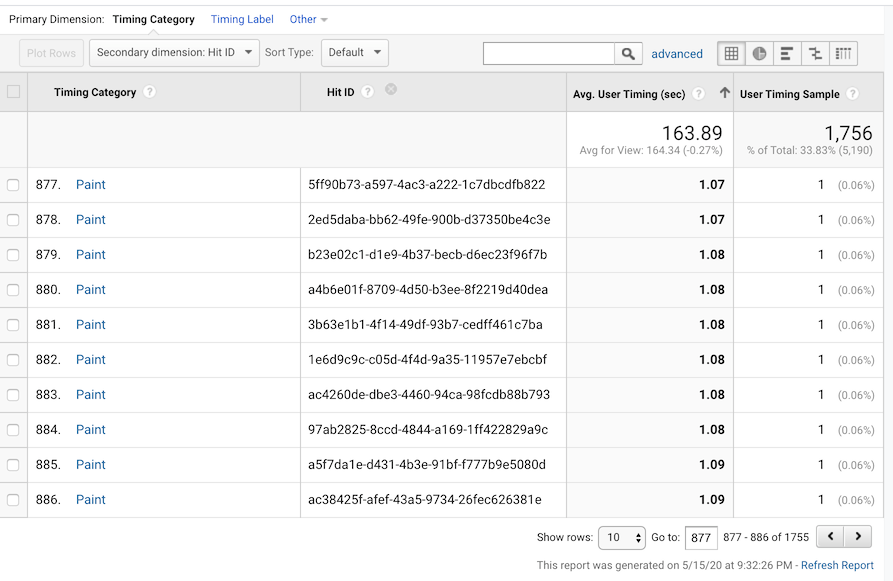Unlock Deeper Insights With Second Measurement in Google Analytics
With the substantial stretch of information offered in Google Analytics, the usage of secondary measurements can dramatically improve your logical capabilities. These extra layers of information use a nuanced point of view that can illuminate elaborate information within your primary metrics. By strategically integrating second measurements right into your analysis, you can uncover beneficial understandings that might otherwise continue to be undiscovered. The capability to divide and translate individual behavior with higher precision opens a realm of possibilities for improving and maximizing methods efficiency.
Comprehending Main Vs. Second Dimensions
When assessing data in Google Analytics, it is important to compare key and additional measurements to acquire much deeper insights into user behavior. Primary dimensions are the major classifications through which you can watch your information, such as landing, device, or source/medium web page. These dimensions give the essential framework for organizing and understanding your information. On the other hand, additional measurements enable you to further dissect your main dimension information. By including a secondary measurement, you can layer on added details to your primary dimension, making it possible for an extra granular evaluation. If your main dimension is the source/medium via which users showed up on your site, including a secondary measurement like geographical area can disclose where those users are located geographically. This added layer of details can assist you recognize trends, patterns, or abnormalities that might not have actually appeared when taking a look at the main dimension alone. Consequently, leveraging both second and primary dimensions in Google Analytics is critical for comprehensive data analysis and informed decision-making.
Making Use Of Additional Dimensions Successfully
By including additional measurements alongside primary dimensions, marketers and analysts can dive much deeper into the specifics of individual communications on their websites. Additional measurements permit individuals to segment and filter main measurement data additionally, using a much more detailed sight of individual interactions, habits, and demographics.
Moreover, second dimensions make it possible for users to contrast and contrast various data points within a solitary report, facilitating a more extensive evaluation of user behavior patterns. By leveraging secondary dimensions properly, companies can reveal surprise understandings, enhance their advertising techniques, and boost the overall individual experience on their web sites.
Exploring Common Additional Measurement Mixes
To further evaluate customer behavior and trends in Google Analytics, it is valuable to explore typical combinations of additional dimensions. Some common second measurement combinations that provide important insights include assessing website traffic sources with user locations to understand where web site site visitors are coming from geographically and how they located the website. Taking a look at user behavior index metrics with additional dimensions such as demographics or interests can assist in targeting details audience sectors extra successfully.
Applying Second Dimension in Personalized Reports
Using additional dimensions in custom-made reports permits a more thorough evaluation of data in Google Analytics, boosting the depth of understandings obtained. When creating custom records in Google Analytics, integrating secondary dimensions can offer a much more comprehensive sight of just how various measurements engage with each other. This function makes it possible for individuals to dive much deeper right into their information and discover beneficial relationships that might not be right away apparent.
By applying second dimensions in custom records, customers can get a far better understanding of their site or application website traffic. Integrating the key measurement of "source/medium" with the additional measurement of "landing page" can expose which touchdown web pages are doing best for traffic coming from certain resources. This understanding can aid marketers maximize their campaigns and improve general conversion prices.

Enhancing Data Visualization With Additional Dimension
When discovering data in Google Analytics personalized records, including additional dimensions not just offers a more comprehensive evaluation however likewise enhances the aesthetic depiction of understandings via information visualization. By including a secondary dimension to your reports, you can enrich the means information is offered, making it simpler to recognize patterns, trends, and connections within your site's performance metrics.
Additional dimensions can help you section your information further, enabling a deeper understanding of individual habits and communications on your website. When attempting to isolate specific variables that may impact your site's performance., this enhanced level of granularity can be particularly helpful.

Conclusion
In verdict, leveraging second dimensions in Google Analytics allows for an extra detailed analysis of information, leading to much deeper understandings and more enlightened decision-making. Secondary Dimension in Google Analytics. By adding additional layers of info to primary data sets, marketing professionals and analysts can discover covert fads, patterns, and relationships that offer a granular view of customer behavior and communications. This improved level of insight enables optimization of campaigns and customized strategies for certain audience segments, inevitably boosting efficiency and conversion rates
On the other hand, additional measurements allow you to more explore your key dimension data. By adding a secondary dimension, you can layer on added info to your primary dimension, visit this site right here enabling an extra granular evaluation. If your key measurement is the source/medium via which individuals showed up on your site, including a secondary dimension like geographic area can expose where those customers are situated geographically. By incorporating additional dimensions together with key dimensions, marketers and analysts can dig much deeper right into the specifics of individual communications on their web sites. Second measurements enable customers to section and filter primary dimension information better, offering a more in-depth sight of customer demographics, interactions, and habits.